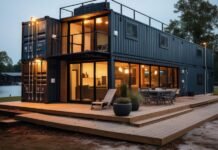Living Green in Hyderabad: M V Ramachandrudu’s Sustainable Home Journey
Hyderabad, a city known for its rich history and rapid modernization, finds itself at the forefront of an inspiring sustainability movement led by one remarkably dedicated individual—M V Ramachandrudu. With nearly 30 years of experience advocating for environmental issues, this civil engineer has transitioned from theory to practice, embodying what it means to be a responsible citizen through his efforts to build a home that truly reflects his principles of sustainable living.
Bridging the Gap Between Theory and Practice
Since completing his studies in 1990, Ramachandrudu has passionately engaged in environmental planning, focusing on carbon footprint reduction, water conservation, and promoting greener living practices. Although he has contributed to various non-profits nationwide, he often felt a disconnect between his professional advice and his personal lifestyle. This gap propelled him to realize his long-held dream of creating a home that aligns with his values.
In 2011, he seized an opportunity by purchasing a 2,700-square-foot plot of land where he would construct his sustainable sanctuary. Emphasizing biodiversity, he cultivated an impressive 40 varieties of trees, including mango, orange, papaya, and jackfruit, while also nurturing ten types of hibiscus. This green space not only enhances the environment but serves as a functional garden that produces fruit for the family.
Innovative Construction Techniques
What sets Ramachandrudu’s home apart is its avant-garde construction, primarily utilizing recycled materials—an admirable feat that showcases both creativity and ecological responsibility. Alongside his son, Bharani, the pair leveraged shipping containers, old glass doors, and even cycle rims to construct a two-storey structure adjacent to their primary residence. The use of shipping containers not only reduces waste but also provides unique aesthetic and spatial design opportunities.
The duo ingeniously crafted their home’s foundations using repurposed steel pipes, which were originally designed for borewell excavation. They further added character by creating stunning mosaic artwork for their bathroom flooring using broken ceramic pieces. Ramachandrudu speaks candidly about their motivations and priorities, stating that resourcefulness is vital when aiming for sustainable living.
Eco-Friendly Features: Cooling and Insulation
A hallmark of this sustainable home is its innovative temperature regulation strategies. By using a masonry technique known as “Rat Trap Bond,” popularized by the renowned architect Laurie Baker, Ramachandrudu and Bharani created walls that not only reduce the amount of bricks and mortar needed but also enhance energy efficiency. The resulting cavities in the walls act as thermal insulators, making their home significantly cooler during hot summer days—often by as much as seven degrees without relying on air conditioning or coolers.
Bharani shares insights on the importance of eco-friendly living for the younger generation, expressing a desire to break free from societal norms that prioritize fast-paced lifestyles. His commitment to sustainability not only reflects a personal choice but an acknowledgment of a broader responsibility toward the environment.
Sustainable Materials and Aesthetic Appeal
Rather than opting for newly sourced wood, Ramachandrudu sourced antique wood from demolished homes, giving their residence a charming, old haveli-type ambiance. Additionally, the family has creatively repurposed old glass and cycle rims to craft elegant window frames, showcasing a commitment to sustainability and resourcefulness throughout the construction process.
Arranging the materials creatively adds a warm familiarity to the space while keeping the principles of eco-friendliness at the forefront.
Harnessing Nature: Solar Power and Rainwater Harvesting
Two years ago, Ramachandrudu installed a one-kilowatt off-grid solar power system, significantly slashing their electricity bill from ₹800 to a mere ₹80 a month. Coupled with their innovative approach to rainwater harvesting, the family collects around 40,000 liters of rainwater annually, with additional measures to recharge their borewell, ensuring a sustainable water source that can be utilized for drinking.
This harmonious blend of technology and natural resources illustrates an admirable commitment to reduced energy reliance and resourcefulness that can serve as a model for others looking to conserve.
Home-Made, Chemical-Free Living
Ramachandrudu has also explored ways to reduce chemical pollution. Having implemented a greywater recycling system, he collects and repurposes treated water for gardening. Recognizing the environmental impact of conventional cleaning products, the family now produces their own eco-friendly cleaners from bio enzymes, wood ash, and cow dung, eliminating the need for commercial detergents.
By using natural ingredients such as flowers and lime waste, they continuously develop innovative solutions that prove to be both effective and environmentally sound.
A Path Forward: Sharing Their Vision
As their sustainable living journey continues to evolve, Ramachandrudu and Bharani are optimistic about sharing their groundbreaking approach with others. They plan to register their container home on platforms like Airbnb, providing a practical example of eco-friendly living for visitors and inspiring the community to rethink their own living environments.
In concluding his narrative, Ramachandrudu reflects on the personal fulfillment that this transition has brought him. By creating a sustainable home, he bridges the divide between advocating for green practices and embodying them in his daily life—a compelling reminder of the impact one individual can make on future generations and the environment.
Through their journey, M V Ramachandrudu and Bharani’s story resonates with a universal theme: our choices truly shape the world around us, and it’s never too late to embrace sustainable living.














